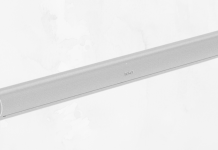It is essential to check the condition of the tires or wheels of our vehicle on a regular basis, to ensure that they meet the necessary safety conditions, both for us and for other drivers and pedestrians.
The use of excessively worn tires implies some risks that we must avoid, since the consequences can be very serious.
Here you go for the Best Review On Milestar Patagonia MT
What is a worn tire?
We can classify a tire as worn when it meets any of the following requirements:
- The one in which the depth of its tread is at the same level as the wear indicator, which is visible at various points on the tire.
- The one that presents another type of damage that causes it to not be able to be used
- The one that, due to its age, cannot be used anymore, having to be replaced by a new one.
What is the maximum degree of wear to replace a tire?
To know if the time has come for a tire to be replaced by a new one, it will suffice to look at it, the answer being affirmative if it meets any of the following requirements:
- Tread wear less than 1.6 mm.
- Existence of some separation between elements of the tire
- Deformation of the frame, or that it has some exposed piece
- stains inside
- Dents or deformations on its flank
- Rubber cuts and tears on the sidewalls, even if only superficial
Another aspect to take into account is the depth of the tread and how it affects the traction of the tire, and that is that between a tire that has the minimum tread depth allowed and another with a new tread, the first it will always be much worse, especially as regards the issue of wet ground.
Here we must take into consideration that a tire whose tread is 4 mm. deep, it will offer only 65% of the grip that tires with a tread of 8 mm usually have.
On the other hand, a tire with the depth allowed by the regulations, that is, 1.6 mm, will have only 40% of the grip of a new tire on wet ground.
How to measure tire wear?
The Wear Indicator
The wear indicator is a 1.6 mm rubber pad. thick that all tires have. It is embedded in the bottom of the grooves of the tire, in such a way that when the rubber of the tread reaches its level it means that the legal wear limit has been reached, and that the wheel has to be replaced.
On the side of the tire there is a small mark, which can consist of the initials TWI, a triangle or even the initials of the tire brand. This mark is intended to help us locate where exactly the wear indicator is.
The Depth Indicator
It is a tool that allows us to measure, with total precision, the exact depth of the grooves in our tires in various places.
A coin
If we do not want to buy the depth indicator, we can make a first approximate measurement of the groove of our tires using a coin.
In the case of a summer tire, the coin must be €1. If the stars on the rim are visible, the tire must be changed.
As for the winter tire, the coin will be €2. If the silver outer edge protrudes from the groove, it is also a sign that it is time to change the tire.
Types of tire wear
Various types of wear can be distinguished in the tire tread.
Natural wear: it is uniform, both in the circumference of the tread and in the width of the tire
Non-symmetrical wear: it is faster on one side of the belt than on the other
Circular wear: when the height of the band is greater in the central area than in the arms
Concave wear: occurs when the inflation pressure is too high, causing wear to occur in the central area
Local wear: This name is given when the tire is exposed to great wear in the circumferential area. It is usually due to sudden braking or even the poor quality of the tire
Staggered wear: Characterized by irregular wear of the belt blocks, in the form of steps.































